The Oxford Handbook of Evolutionary Psychology and Romantic Relationships Justin
K. Mogilski

K. Mogilski
Visit to download the full and correct content document: https://ebookmass.com/product/the-oxford-handbook-of-evolutionary-psychology-andromantic-relationships-justin-k-mogilski-editor/

More products digital (pdf, epub, mobi) instant download maybe you interests ...
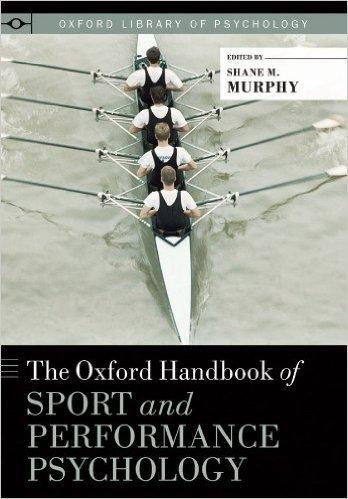
eTextbook 978-0199731763 The Oxford Handbook of Sport and Performance Psychology (Oxford Library of Psychology)
https://ebookmass.com/product/etextbook-978-0199731763-theoxford-handbook-of-sport-and-performance-psychology-oxfordlibrary-of-psychology/
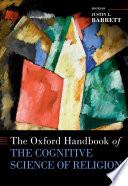
The Oxford Handbook of the Cognitive Science of Religion Justin L. Barrett
https://ebookmass.com/product/the-oxford-handbook-of-thecognitive-science-of-religion-justin-l-barrett/
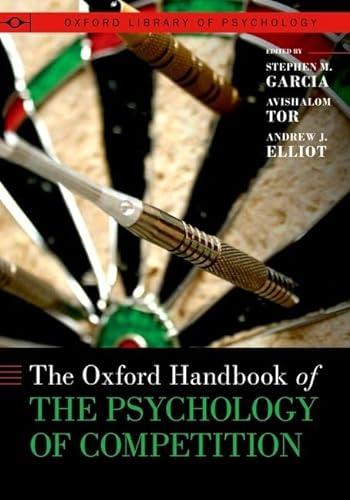
The Oxford Handbook of the Psychology of Competition (Oxford Library of Psychology) Stephen M. Garcia
https://ebookmass.com/product/the-oxford-handbook-of-thepsychology-of-competition-oxford-library-of-psychology-stephen-mgarcia/
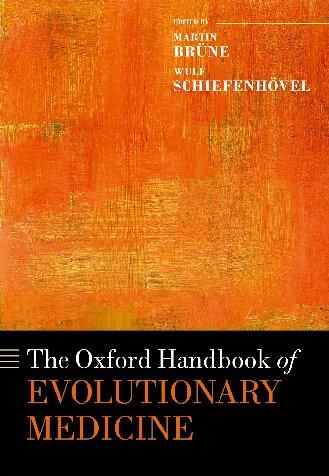
Oxford Handbook of Evolutionary Medicine 1st Edition
Martin Brüne
https://ebookmass.com/product/oxford-handbook-of-evolutionarymedicine-1st-edition-martin-brune/
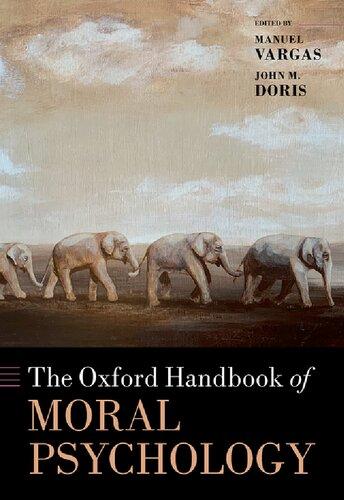
The Oxford Handbook of Moral Psychology Manuel Vargas
https://ebookmass.com/product/the-oxford-handbook-of-moralpsychology-manuel-vargas/
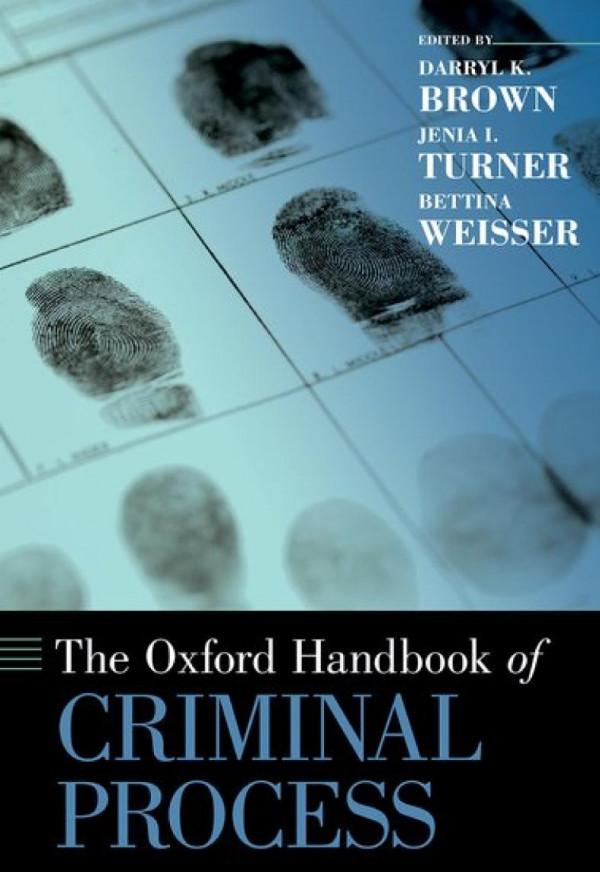
The Oxford Handbook of Criminal Process Darryl K Brown
https://ebookmass.com/product/the-oxford-handbook-of-criminalprocess-darryl-k-brown/
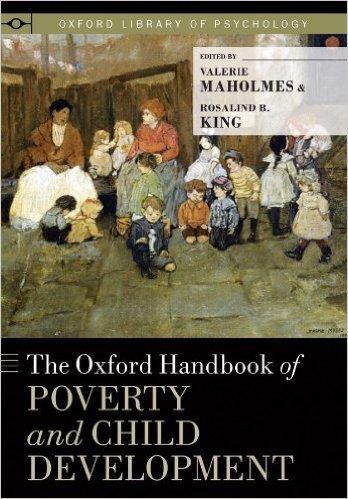
eTextbook 978-0199769100 The Oxford Handbook of Poverty and Child Development (Oxford Library of Psychology)
https://ebookmass.com/product/etextbook-978-0199769100-theoxford-handbook-of-poverty-and-child-development-oxford-libraryof-psychology/
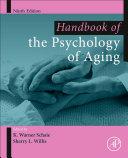
Handbook of the Psychology of Aging 9th Edition K.
Warner Schaie
https://ebookmass.com/product/handbook-of-the-psychology-ofaging-9th-edition-k-warner-schaie/

Oxford Handbook of Ophthalmology Alastair K. O.
Denniston
https://ebookmass.com/product/oxford-handbook-of-ophthalmologyalastair-k-o-denniston/
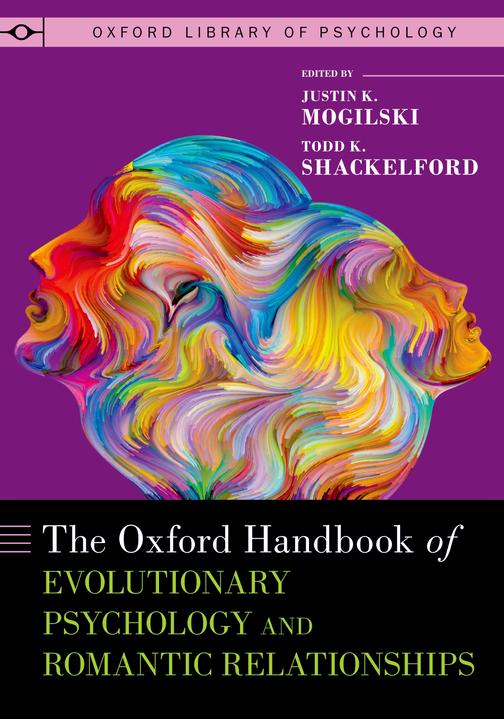
The Oxford Handbook of Evolutionary Psychology and Romantic Relationships

Edited by Justin K. Mogilski and Todd K. Shackelford
Oxford University Press is a department of the University of Oxford. It furthers the University’s objective of excellence in research, scholarship, and education by publishing worldwide. Oxford is a registered trade mark of Oxford University Press in the UK and certain other countries.
Published in the United States of America by Oxford University Press 198 Madison Avenue, New York, NY 10016, United States of America.
© Oxford University Press 2023
All rights reserved. No part of this publication may be reproduced, stored in a retrieval system, or transmitted, in any form or by any means, without the prior permission in writing of Oxford University Press, or as expressly permitted by law, by license, or under terms agreed with the appropriate reproduction rights organization. Inquiries concerning reproduction outside the scope of the above should be sent to the Rights Department, Oxford University Press, at the address above.
You must not circulate this work in any other form and you must impose this same condition on any acquirer.
Library of Congress Cataloging-in-Publication Data
Names: Mogilski, Justin K., author. | Shackelford, Todd K. (Todd Kennedy), 1971- author. Title: The Oxford handbook of evolutionary psychology and romantic relationships / Justin K. Mogilski & Todd K. Shackelford.
Description: 1 Edition. | New York, NY : Oxford University Press, [2023] | Series: Oxford library of psychology series | Includes bibliographical references and index.
Identifiers: LCCN 2022031994 (print) | LCCN 2022031995 (ebook) | ISBN 9780197524718 (hardback) | ISBN 9780197524749 | ISBN 9780197524732 (epub)
Subjects: LCSH: Evolutionary psychology. | Intimacy (Psychology) | Interpersonal relations—Psychological aspects.
Classification: LCC BF698.95 .M64 2022 (print) | LCC BF698.95 (ebook) | DDC 155.7—dc23/eng/20220729
LC record available at https://lccn.loc.gov/2022031994
LC ebook record available at https://lccn.loc.gov/2022031995
DOI: 10.1093/oxfordhb/9780197524718.001.0001
9 8 7 6 5 4 3 2 1
Printed by Marquis, Canada
Justin K. Mogilski I research how evolution has shaped brain computation to adaptively guide the decisions that people make to initiate, maintain, and dissolve intimate relationships. I have published original research within peer-reviewed evolutionary, social, personality, and sexual psychology journals on topics spanning mate poaching, infidelity, cross-gender friendship, intimate partner conflict, moral decision-making, morphometric cues of partner attractiveness, and multivariate statistical analyses of human mate preference. My current program of research examines (a) conflict resolution within consensually nonmonogamous (CNM; e.g., polyamorous, swinging, and open) relationships, (b) how sexual conflict shapes moral decision-making, and (c) individual differences in predatory relationship behaviors.
Todd K. Shackelford received his Ph.D. in evolutionary psychology in 1997 from the University of Texas at Austin. Since 2010, he has been Professor and Chair of the Department of Psychology at Oakland University in Rochester, Michigan. Shackelford has published around 400 journal articles and his work has been cited around 28,000 times. Much of Shackelford’s research addresses sexual conflict between men and women, with a focus on men’s physical, emotional, and sexual violence against their intimate partners.
Contributors xi
Introduction 1
Justin K. Mogilski and Todd K. Shackelford
1. The sexual selection of human mating strategies: Mate preferences and competition tactics 15
David M. Buss
2. Physical cues of partner quality 42
Ian D. Stephen and Severi Luoto
3. The three Cs of psychological mate preferences: The psychological traits people want in their romantic and sexual partners 74
Peter K. Jonason and Evita March
4. Partner evaluation and selection 94
Norman P. Li and Bryan K. C. Choy
5. Hormonal mechanisms of partnership formation 127
Anastasia Makhanova
6. Human intersexual courtship 158
Neil R. Caton, David M. G. Lewis, Laith Al-Shawaf, and Kortnee C. Evans
7. Intrasexual mating competition 182
Jaimie Arona Krems, Hannah K. Bradshaw, and Laureon A. Merrie
8. Initiation of non-heterosexual relationships 212
Jaroslava Varella Valentova, Bruno Henrique Amaral, and Marco Antonio Correa Varella
9. Relationship initiation among older adults 243
Chaya Koren and Liat Ayalon
10. Cross-cultural variation in relationship initiation 267
Victor Karandashev
11. Sexual conflict during relationship maintenance 307
Leif Edward Ottesen Kennair, Trond Viggo Grøntvedt, Andrea Melanie Kessler, and Mons Bendixen
12. Jealousy in close relationships from an evolutionary and cultural perspective: Responding to real and feared rivals 333
Abraham P. Buunk and Karlijn Massar
13. Hormonal mechanisms of in-pair mating and maintenance 360
Amanda Denes, John P. Crowley, and Anuraj Dhillon
14. Mate guarding and partner defection avoidance 397
Valerie G. Starratt
15. Intimate partner violence and relationship maintenance 413
Gordon G. Gallup, Jr. and Rebecca L. Burch
16. Parenting and relationship maintenance 427
Elizabeth M. Westrupp, Emma M. Marshall, Clair Bennett, Michelle Benstead, Gabriella King, and Gery C. Karantzas
17. Maintaining multipartner relationships: Evolution, sexual ethics, and consensual nonmonogamy 461
Justin K. Mogilski, David L. Rodrigues, Justin J. Lehmiller, and Rhonda N. Balzarini
18. Evolutionary perspectives on relationship maintenance across the spectrum of sexual and gender diversity 487
Lisa M. Diamond and Jenna Alley
19. Relationship maintenance in older adults: Considering social and evolutionary psychological perspectives 507
Ledina Imami and Christopher R. Agnew
20. Cultural variation in relationship maintenance 528
Lora Adair and Nelli Ferenczi
21. Relationship dissatisfaction and partner access deficits 565
T. Joel Wade, James B. Moran, and Maryanne L. Fisher
22. In-pair divestment 586
Simona Sciara and Giuseppe Pantaleo
23. Mate poaching, infidelity, and mate switching 611
Joshua Everett Ryan and Edward P. Lemay, Jr.
24. Menstrual cycle variation in women’s mating psychology: Empirical evidence and theoretical considerations 643
Jan Havlíček and S. Craig Roberts
25. Affective reactions to divorce or spousal death 675
Jeannette Brodbeck and Hans Joerg Znoj
26. Affective self-regulation after relationship dissolution 698
Leah E. LeFebvre and Ryan D. Rasner
27. Post-relationship romance 730
Michael R. Langlais and He Xiao
28. Evolutionary perspectives on post-separation parenting 748
Lawrence J. Moloney and Bruce M. Smyth
29. Dissolution of LGBTQ+ relationships 779
Madeleine Redlick Holland and Pamela J. Lannutti
30. Relationship dissolution among adults 797
Dimitri Mortelmans
Limitations and future directions in the evolutionary study of romantic relationships 826
Justin K. Mogilski and Todd K. Shackelford
Index 831
Lora Adair
Department of Life Sciences, Brunel
University London
Christopher R. Agnew
Department of Psychological Sciences, Purdue University
Jenna Alley
Department of Psychology, University of Utah
Laith Al-Shawaf
Psychology Department, University of Colorado
Bruno Henrique Amaral
Department of Experimental Psychology, University of São Paulo
Liat Ayalon
Louis and Gabi Weisfeld School of Social Work, Bar Ilan University
Rhonda N. Balzarini
Department of Psychology, Texas State University
Mons Bendixen
Department of Psychology, Norwegian University of Science and Technology
Clair Bennett
Columbia University Department of Psychiatry, Columbia University
Irving Medical Center, New York
State Psychiatric Institute, La Trobe University
Michelle Benstead
School of Psychology, The Centre for Social and Early Emotional Development, Deakin University
Hannah K. Bradshaw
Department of Psychology, Washington & Jefferson College
Jeannette Brodbeck
Department of Psychology University of Bern, University for Applied Sciences and Arts Northwestern Switzerland
Rebecca L. Burch
Department of Human Development, SUNY Oswego
David M. Buss
Department of Psychology, University of Texas, Austin
Abraham P. Buunk University of Groningen, The Netherlands
Neil R. Caton
School of Psychology, The University of Queensland
Bryan K. C. Choy
School of Social Sciences, Singapore
Management University
John P. Crowley
Department of Communication, University of Delaware
Amanda Denes
Department of Communication, University of Connecticut
Anuraj Dhillon
Communication Studies
Department, California Polytechnic State University, San Luis Obispo
Lisa M. Diamond
Department of Psychology, University of Utah
Kortnee C. Evans
Psychology Department, Murdoch University
Nelli Ferenczi
Department of Life Sciences, Brunel University London
Maryanne L. Fisher
Department of Psychology, The Kinsey Institute, Saint Mary’s University
Gordon G. Gallup, Jr.
Department of Psychology, University at Albany
Trond Viggo Grøntvedt
Department of Psychology, Norwegian University of Science and Technology
Jan Havlíček
Department of Zoology, Charles University
Madeleine Redlick Holland
Department of Communication Studies, The University of Texas at Austin
Ledina Imami
Department of Psychological Sciences, Purdue University
Peter K. Jonason
Department of General Psychology, University of Padua and University of Cardinal Stefan Wyszyński
Victor Karandashev
Department of Psychology, Aquinas College
Gery C. Karantzas
School of Psychology, The Centre for Social and Early Emotional Development, Deakin University
Leif Edward Ottesen Kennair Department of Psychology, Norwegian University of Science and Technology
Andrea Melanie Kessler Department of Psychology, Norwegian University of Science and Technology
Gabriella King School of Psychology, Deakin University
Chaya Koren
School of Social Work and the Center for the Study of Society, University of Haifa
Jaimie Arona Krems
Department of Psychology, Oklahoma Center for Evolutionary Analysis (OCEAN), Oklahoma State University
Michael R. Langlais
Department of Educational Psychology, Florida State University
Pamela J. Lannutti
Center for Human Sexuality Studies, Widener University
Leah E. LeFebvre
Department of Communication Studies, University of Alabama
Justin J. Lehmiller Kinsey Institute, Indiana University
Edward P. Lemay, Jr. Department of Psychology, University of Maryland, College Park
David M. G. Lewis
Discipline of Psychology, Murdoch University
Centre for Healthy Ageing, Health Futures Institute, Murdoch University
Norman P. Li
School of Social Sciences, Singapore
Management University
Severi Luoto
School of Population Health, University of Auckland
Anastasia Makhanova
Psychological Science, University of Arkansas
Evita March
Department of Psychology, Federation University Australia
Emma M. Marshall
School of Psychology Deakin University
Karlijn Massar
Work and Social Psychology, Maastricht University
Laureon A. Merrie
Department of Psychology, Oklahoma Center for Evolutionary Analysis (OCEAN), Oklahoma State University
Justin K. Mogilski
Department of Psychology, University of South Carolina
Salkehatchie
Lawrence J. Moloney
School of Psychology and Public Health, La Trobe University
James B. Moran
Department of Psychology, Tulane University
Dimitri Mortelmans
Department of Sociology, Antwerp University
Giuseppe Pantaleo
UniSR-Social.Lab, Faculty of Psychology, Vita-Salute San Raffaele University
Ryan D. Rasner
Department of Communication Studies, Louisiana State University
S. Craig Roberts
Division of Psychology, University of Stirling
David L. Rodrigues
Centre for Social Research and Intervention, Iscte- Instituto Universitário de Lisboa
Joshua Everett Ryan
Department of Psychology University of Maryland, College Park
Simona Sciara
UniSR-Social.Lab, Faculty of Psychology, Vita-Salute San Raffaele University
Bruce M. Smyth
Centre for Social Research and Methods, Australian National University
Valerie G. Starratt
Department of Psychology and Neuroscience, Nova Southeastern University
Ian D. Stephen NTU Psychology, Nottingham Trent University
Jaroslava Varella Valentova
Department of Experimental Psychology, University of Sao Paulo
Marco Antonio Correa Varella
Department of Experimental Psychology, University of São Paulo
T. Joel Wade
Department of Psychology, Psychological Adaptations Research Consortium, Bucknell University
Elizabeth M. Westrupp
School of Psychology, The Centre for Social and Early Emotional Development, Deakin University
He Xiao Department of Educational Psychology, University of North Texas
Hans Joerg Znoj Department of Psychology, University of Bern
Justin K. Mogilski and Todd K. Shackelford
Abstract
Evolutionary social science is having a renaissance. What started with a collection of estimates by Charles Darwin and colleagues about biological change and diversity has manifested a theoretical powerhouse incorporating varied disciplinary perspectives and methodologies. In this chapter, we introduce these advancements and provide an overview of how evolutionary perspectives have enriched the scientific study of intimate relationship initiation, maintenance, and dissolution. We highlight several areas of research that feature prominently throughout this handbook, including studies of gender and sexual diversity, social neuroendocrinology, personality science, and international trends in human mating. We conclude with a brief editorial note to current and future relationship scientists, to whom this volume is dedicated.
Key Words: Evolutionary science, intimate relationships, romantic relationships, gender and sexual diversity, social neuroendocrinology, personality science, international
Psychologists who adopt the evolutionary paradigm (see Nettle & Scott-Phillips, 2021) seek to document how information processing of the mind has been engineered to address the unremitting challenges of survival and reproduction. Its predictive framework has been broadly adopted within the social sciences, including anthropology (Fessler et al., 2015; Gibson & Lawson, 2015), sociology (Tanskanen & Danielsbacka, 2018), consumer research (Otterbring, 2021; Saad, 2017), decision science (Morris et al., 2021), animal behavior and cognition (Vonk, 2021), political science (McDermott & Hatemi, 2018; Petersen, 2020), and law and social policy (James et al., 2020; Palomo-Vélez & van Vugt, 2021). Natural selection of genes is a popular level of analysis at which to propose and test evolutionary hypotheses because DNA is the fundamental unit of inheritance in sexually reproducing organisms (see Williams, 1966). Biological evolution occurs when populations undergo cross-generational change in heritable trait frequency. These traits are pitted against the reproductive and survival demands of life, and those which better promote self-replication compared to competing alternatives become more prevalent. However, evolutionary change occurs in any cyclic system where modification by competitive replacement occurs over time, such as in neural network modeling (Badcock et al., 2019; Hasson et al., 2020; Stanley et al., 2019), cellular growth (Aktipis, 2020), decision-making (Morris et al., 2021), or multilevel selection (Hertler et al., 2020; Wilson
& Coan, 2021). Each application shares the common premise that if you study how evolution has engineered a system, you will discover that system’s functional design.
The evolutionary study of romantic relationships has accordingly uncovered the adapted psychology underlying intimate relationships (Bode & Kushnick, 2021; Buss & Schmitt, 2019; Durante et al., 2016). For example, it is well documented that reproduction entails unique adaptive challenges for men and women (e.g., paternal uncertainty and minimum investment in gestation), which create unique mating optima for each sex (Trivers, 1972; see Mogilski et al., 2021). These optima can conflict (see Kennair et al., this volume) causing sexual selection for different ideal mating strategies for men and women (Buss & Schmitt, 1993; Luoto 2019; Puts, 2016). Understanding how attraction and competition occurs between the sexes thus becomes a useful framework for predicting how people initiate, maintain, and dissolve their relationships. That is, the collaboration and conflict that people experience within their relationship(s) may follow computationally adaptive scripts that—at least across deep evolutionary time—alleviated the exigencies of men’s and women’s unique reproductive challenges. These foundations and their empirical support are reviewed in Chapter 1 and referenced throughout this volume.
Of course, good theory reliably and expansively predicts the phenomena that it explains. Relationship researchers who use the evolutionary paradigm have rapidly integrated it with gender and women’s studies (Fisher et al., 2020; van Anders, 2013), sexuality (Diamond, 2021; Sommer & Vasey, 2006), marriage and family studies (Aspara et al., 2018), neuroendocrinology (Welling & Shackelford, 2019), mating cognition (Joel & MacDonald, 2021; Lenton & Stewart, 2008; Miller & Todd, 1998), intelligence (Baur et al., 2019; Miller, 2000), and comparative psychology (Fraley et al., 2005). This wellspring of novelty has matured to create robust, replicable models of mate choice (ConroyBeam et al., 2019, 2021; Walter et al., 2020), same-sex competition (see Krems et al., in this volume; also Ayers, 2021; Bradshaw & DelPriore, 2022; Reynolds et al., 2018), friendship (Seyfarth & Cheney, 2012; Williams et al., 2022), jealousy (Buss, 2018; Edlund et al., 2018), face and body perception (Antar & Stephen, 2021; Brown et al., 2021; Fink et al., 2018), and interpersonal deception (Desrochers et al., 2021; Redlick & Vangelisti, 2018; Trivers, 1991). Research once dominated by self-report and forcedchoice paradigms has developed multivariate solutions for describing the logic of partner choice (Brandner et al., 2020; Csajbók and Berkics, 2022 Li et al., 2002; Mogilski et al. 2014, 2017, 2018; Jones, 2018; Stephen et al., 2017), relationship maintenance (Vowels et al., 2021). Behavioral genetics (e.g., twin studies) have disentangled the contributions of genes and environment to variation in human development (Kupfer et al., 2022), and applied sciences, such as medicine and mental health (Nesse, 2019; Giosan et al., 2020; Hollon et al., 2021) have advanced how knowledge of evolutionary design can improve personal and relational outcomes.
This diaspora has developed alongside larger trends within relationship science, such as the rising utility and rigor of personality measurement (Del Giudice, 2017; Durkee
et al., 2022; Lukaszewski et al., 2020). Personality science has become central to relationship science because it models how natural variation between individuals impacts interpersonal functioning across time and ecology. Life history theory, for example, meaningfully explains how human cognition is altered by environmental unpredictability and harshness (Simpson et al., 2017). When environments are less predictable, planned investments are unsteady and cost prone. This favors immediate over delayed reward and thereby disposes individuals to present-oriented decisions (Frankenhuis et al., 2016; also see Fenneman & Frankenhuis, 2020; Fennis et al., 2022), less deliberation (Wang et al., 2022), more unrestricted sociosexuality (Szepsenwol et al., 2017), greater interpersonal antagonism and detachment (Jonason et al., 2017), and poor emotional control (see Szepsenwol et al., 2021)—traits which may aid lone survival amid environmental irregularity. As an exemplar of evolutionary theorizing, life history has been successful in integrating findings from varied disciplines (Nettle & Frankenhuis, 2019) and across cultures (Pelham, 2021), but it has accordingly inspired controversy and revision (see Dinh et al., 2022; Woodley et al., 2021; Zeitsch & Sidari, 2020).
Neuroendocrinological research has complemented evolutionary relationship science’s focus on individual differences (Baugh et al., 2017; Trillmich et al., 2018) because hormones mediate sex/gender differences and the intimate processes that develop within and between people (Edelstein & Chin, 2018; Roney & Simmons, 2018; also see Welling & Shackelford, 2019). Corticosteroids guide responsivity to relationship stressors (Mogilski et al., 2019b), oxytocin promotes pair-bonding formation (Walum et al., 2012), and sex hormones shape the morphological and psychological characteristics that systematically differ between men and women (Gurvich et al., 2018; Rehbein et al., 2021)—traits to which people are sensitive when assessing a potential intimate partner (Jones & Jaeger, 2019; Marcinkowska et al., 2014). Indeed, morphometric analyses have allowed researchers to quantify developmental change in sex/gender to study how its fluctuation impacts relationship process (e.g., Stephen et al., 2017). Others have documented how sexual behavior and preferences shift with hormone deficiency (Shirazi et al., 2021), hormonal contraception use (Hill, 2019), and temporal fluctuations in hormone levels, such as across the menstrual cycle (see Havlicek & Roberts, this volume). Endocrinology has thus become a fundamental level of analysis for the evolutionary study of romantic processes (Denes et al., this volume; Makhanova, this volume).
International differences are a substantial source of natural variation in relationship behavior (Kline et al., 2018; Segall et al., 1990; Silan et al., 2021). Evolutionary theorizing has revealed pervasive, culture-sensitive psychological effects related to gender (Lippa, 2010), kin favoritism (Schulz et al., 2019), game theory (Pan, Gelfand, & Nau, 2021), and social organization (see Henrich & Muthukrishna, 2021). Broadly, relationship behaviors are expected to adaptively shift to address local and historical demands on individuals’ survival and well-being. This thereby influences how people initiate (see Karandashev, this volume) and maintain (Adair & Ferenczi, this volume) relationships across cultures.
Studies of sexually and gender diverse people (e.g., those who are lesbian, gay, bisexual, transgender, queer, etc.; i.e., LGBTQ+) have revealed unique variation in human bonding and competition (see Holland & Lannuti, this volume; Pachankis et al., 2020; Semenyna et al., 2021; Valentova et al., this volume). For example, Diamond and Alley (this volume) argue that safety concerns are salient among LGBTQ+ relationships because same-sex attraction and gender nonconformity are targeted more often for condemnation and violence. Eliminating prejudice and wrongful discrimination against LGBTQ individuals (Blair & Hoskin, 2019) may be aided by a technical knowledge of which adaptive concerns these beliefs and attitudes have historically addressed—and whether they still do. Computation that ancestrally enhanced reproduction may be mismatched to modern circumstances (Li et al., 2020). Similarly, studying how people form and maintain multiple, concurrent intimate relationships (i.e., consensual nonmonogamy) (Mogilski et al., this volume) may reveal novel strategies for managing extra-pair romance (also see Brady & Baker, 2022; Hunter & Stockwell, 2022).
By harnessing the insights of interdisciplinary collaboration, evolutionary relationship scientists have identified novel features of human mating, have expanded durable theories and perspectives of human development, and strengthened the methodological robustness of its core predictions. The editors assembled this handbook to showcase the empirical and theoretical progress of the evolutionary study of intimate relationships. We dedicate this volume to future generations of relationship scientists. It is our intent that this collection will be a primer for those seeking to incorporate contemporary evolutionary reasoning and methodology into their research program. Many of its contributors self-identify as evolutionary psychologists. Others do not but are familiar with the evolutionary sciences and have successfully incorporated its reasoning into their work. All have challenged orthodoxy to improve how evolutionary psychology studies intimacy. The authors’ words are their own, but the editors offered feedback for improving the interdisciplinary scope of their writing. Our reflections on each chapter precede each of the three major sections of this handbook: relationship initiation, maintenance, and dissolution.
We hope that readers of this volume walk away feeling that their views on intimacy and interpersonal relationships have been enriched.
References
Aktipis, A. (2020). The cheating cell. Princeton University Press.
Antar, J. C., & Stephen, I. D. (2021). Facial shape provides a valid cue to sociosexuality in men but not women. Evolution and Human Behavior, 42(4), 361–370.
Aspara, J., Wittkowski, K., & Luo, X. (2018). Types of intelligence predict likelihood to get married and stay married: Large-scale empirical evidence for evolutionary theory. Personality and Individual Differences, 122, 1–6.
Ayers, J. D. (2021). Competitive scenarios increase competition in women: A meta-analysis. Evolutionary Behavioral Sciences. Advance online publication. https://doi.org/10.1037/ebs0000278
Badcock, P. B., Friston, K. J., Ramstead, M. J., Ploeger, A., & Hohwy, J. (2019). The hierarchically mechanistic mind: an evolutionary systems theory of the human brain, cognition, and behavior. Cognitive, Affective, & Behavioral Neuroscience, 19(6), 1319–1351.
Baugh, A. T., Senft, R. A., Firke, M., Lauder, A., Schroeder, J., Meddle, S. L., Meddle, S. L. Meddle; van Oers, K., & Hau, M. (2017). Risk-averse personalities have a systemically potentiated neuroendocrine stress axis: A multilevel experiment in Parus major. Hormones and Behavior, 93, 99–108.
Baur, J., Nsanzimana, J. D. A., & Berger, D. (2019). Sexual selection and the evolution of male and female cognition: A test using experimental evolution in seed beetles. Evolution, 73(12), 2390–2400.
Blair, K. L., & Hoskin, R. A. (2019). Transgender exclusion from the world of dating: Patterns of acceptance and rejection of hypothetical trans dating partners as a function of sexual and gender identity. Journal of Social and Personal Relationships, 36(7), 2074–2095.
Bode, A., & Kushnick, G. (2021). Proximate and ultimate perspectives on romantic love. Frontiers in Psychology, 12, 1088.
Bradshaw, H. K., & DelPriore, D. J. (2022). Beautification is more than mere mate attraction: extending evolutionary perspectives on female appearance enhancement. Archives of Sexual Behavior, 51, 43–47.
Brady, A., & Baker, L. R. (2022). The changing tides of attractive alternatives in romantic relationships: Recent societal changes compel new directions for future research. Social and Personality Psychology Compass, 16(1), e12650.
Brandner, J. L., Brase, G. L., & Huxman, S. A. (2020). “Weighting” to find the right person: compensatory trait integrating versus alternative models to assess mate value. Evolution and Human Behavior, 41(4), 284–292.
Brown, M., Sacco, D. F., Boykin, K., Drea, K., & Macchione, A. (2021). Inferences of parental abilities through facial and bodily features. In V. A. Weekes-Shackelford & T. K. Shackelford (Eds.), The Oxford handbook of evolutionary psychology and parenting (pp. 453–467). Oxford University Press.
Buss, D. M. (2018). Sexual and emotional infidelity: Evolved gender differences in jealousy prove robust and replicable. Perspectives on Psychological Science, 13(2), 155–160.
Buss, D. M., & Schmitt, D. P. (1993). Sexual Strategies Theory: An evolutionary perspective on human mating. Psychological Review, 100(2), 204–232. https://doi.org/10.1037/0033-295X.100.2.204
Buss, D. M., & Schmitt, D.P. (2019). Mate preferences and their behavioral manifestations. Annual Review of Psychology, 70, 77–110.
Conroy-Beam, D. (2021). Couple simulation: A novel approach for evaluating models of human mate choice. Personality and Social Psychology Review, 25(3), 198–228.
Conroy-Beam, D., Buss, D. M., Asao, K., Sorokowska, A., Sorokowski, P., Aavik, T., Akello, G., Alhabahba, M. M., Alm, C., Amjad, N., Anjum, A., Atama, C. S., Duyar, D. A., Ayebare, R., Batres, C., Bendixen, M., Bensafia, A., Bizumic, B., Boussena, M. . . . Zupančič, M. (2019). Contrasting computational models of mate preference integration across 45 countries. Scientific Reports, 9(1), 1–13.
Csajbók, Z., & Berkics, M. (2022). Seven deadly sins of potential romantic partners: The dealbreakers of mate choice. Personality and Individual Differences, 186, 111334.
Del Giudice, M. (2017). Integration in personality research: Evolution is the missing catalyst. European. Journal of Personality, 31, 529–595.
Desrochers, J., MacKinnon, M., Kelly, B., Masse, B., & Arnocky, S. (2021). Sex differences in response to deception across mate-value traits of attractiveness, job status, and altruism in online dating. Archives of Sexual Behavior, 50, 3675–3685.
Diamond, L. M. (2021). The new genetic evidence on same-gender sexuality: Implications for sexual fluidity and multiple forms of sexual diversity. The Journal of Sex Research, 58(7), 818–837.
Dinh, T., Haselton, M. G., & Gangestad, S. W. (2022). “Fast” women? The effects of childhood environments on women's developmental timing, mating strategies, and reproductive outcomes. Evolution and Human Behavior, 43(2), 133–146.
Durante, K. M., Eastwick, P. W., Finkel, E. J., Gangestad, S. W., & Simpson, J. A. (2016). Pair-bonded relationships and romantic alternatives: Toward an integration of evolutionary and relationship science perspectives. Advances in Experimental Social Psychology, 53, 1–74.
Durkee, P., Lukaszewski, A., von Rueden, C., Gurven, M., Buss, D. M., & Tucker-Drob, E. (2022). Niche diversity predicts personality structure across 115 nations. Psychological Science, 33(2), 285–298. https:// doi.org/10.1177/09567976211031571
Edelstein, R. S., & Chin, K. (2018). Hormones and close relationship processes: neuroendocrine bases of partnering and parenting. In O. C. Schultheiss & P. H. Mehta (Eds.), Routledge international handbook of social neuroendocrinology (pp. 281–297). Routledge.
Edlund, J. E., Heider, J. D., Nichols, A. L., McCarthy, R. J., Wood, S. E., Scherer, C. R., Hartnett, J. L., & Walker, R. (2018). Sex differences in jealousy: The (lack of) influence of researcher theoretical perspective. The Journal of Social Psychology, 158(5), 515–520.
Fenneman, J., & Frankenhuis, W. E. (2020). Is impulsive behavior adaptive in harsh and unpredictable environments? A formal model. Evolution and Human Behavior, 41(4), 261–273.
Fennis, B. M., Gineikiene, J., Barauskaite, D., & van Koningsbruggen, G. M. (2022). Acute stress can boost and buffer hedonic consumption: The role of individual differences in consumer life history strategies. Personality and Individual Differences, 185, Article 111261.
Fessler, D. M. T., Clark, J. A., & Clint, E. K. (2015). Evolutionary psychology and evolutionary anthropology. In D. M. Buss (Ed.), the handbook of evolutionary psychology, volume 2: integrations (pp. 1029–1046). John Wiley & Sons.
Fink, B., Liebner, K., Müller, A. K., Hirn, T., McKelvey, G., & Lankhof, J. (2018). Hair colour and skin colour together influence perceptions of age, health and attractiveness in lightly pigmented young women. International Journal of Cosmetic Science, 40(3), 303–312.
Fisher, M. L., Garcia, J. R., & Burch, R. L. (2020). Evolutionary psychology: Thoughts on integrating feminist perspectives. In L. Workman, W. Reader, & J. H. Barkow (Eds.), The Cambridge handbook of evolutionary perspectives on human behavior (pp. 378–391). Cambridge University Press. https://doi.org/10.1017/ 9781108131797.032
Fraley, R. C., Brumbaugh, C. C., & Marks, M. J. (2005). The evolution and function of adult attachment: a comparative and phylogenetic analysis. Journal of Personality and Social Psychology, 89(5), 731.
Frankenhuis, W. E., Panchanathan, K., & Nettle, D. (2016). Cognition in harsh and unpredictable environments. Current Opinion in Psychology, 7, 76–80.
Gibson, M. A., & Lawson, D. W. (2015). Applying evolutionary anthropology. Evolutionary Anthropology: Issues, News, and Reviews, 24(1), 3–14.
Giosan, C., Cobeanu, O., Wyka, K., Muresan, V., Mogoase, C., Szentagotai, A., Malta, L. S., & Moldovan, R. (2020). Cognitive evolutionary therapy versus standard cognitive therapy for depression: A single-blinded randomized clinical trial. Journal of Clinical Psychology, 76(10), 1818–1831.
Gurvich, C., Hoy, K., Thomas, N., & Kulkarni, J. (2018). Sex differences and the influence of sex hormones on cognition through adulthood and the aging process. Brain Sciences, 8(9), 163.
Hasson, U., Nastase, S. A., & Goldstein, A. (2020). Direct fit to nature: An evolutionary perspective on biological and artificial neural networks. Neuron, 105(3), 416–434.
Henrich, J., & Muthukrishna, M. (2021). The origins and psychology of human cooperation. Annual Review of Psychology, 72, 207–240.
Hertler, S. C., Figueredo, A. J., & Peñaherrera-Aguirre, M. (2020). Multilevel selection: theoretical foundations, historical examples, and empirical evidence. Springer Nature.
Hill, S. (2019). This is your brain on birth control: The surprising science of women, hormones, and the law of unintended consequences. Penguin.
Hollon, S. D., Andrews, P. W., & Thomson Jr, J. A. (2021). Cognitive behavior therapy for depression from an evolutionary perspective. Frontiers in Psychiatry, 12, Article 667592.
Hunter, G., & Stockwell, A. (2022). Toward a behavior-analytic understanding of jealousy and compersion in romantic and sexual relationships. European Journal of Behavior Analysis, 23(1), 78–108.
James, L., Todak, N., & Savage, J. (2020). Unnecessary force by police: Insights from evolutionary psychology. Policing: A Journal of Policy and Practice, 14(1), 278–291.
Joel, S., & MacDonald, G. (2021). We’re not that choosy: Emerging evidence of a progression bias in romantic relationships. Personality and Social Psychology Review, 25, 317–343.
Jonason, P. K., Zeigler-Hill, V., & Baldacchino, J. (2017). Before and after: Personality pathology, childhood conditions, and life history outcomes. Personality and Individual Differences, 116, 38–43.
Jones, A. L. (2018). The influence of shape and colour cue classes on facial health perception. Evolution and Human Behavior, 39(1), 19–29.
Jones, A. L., & Jaeger, B. (2019). Biological bases of beauty revisited: The effect of symmetry, averageness, and sexual dimorphism on female facial attractiveness. Symmetry, 11(2), 279.
Kline, M. A., Shamsudheen, R., & Broesch, T. (2018). Variation is the universal: Making cultural evolution work in developmental psychology. Philosophical Transactions of the Royal Society B: Biological Sciences, 373(1743), 20170059.
Kupfer, T. R., Sidari, M. J., Zietsch, B. P., Jern, P., Tybur, J. M., & Wesseldijk, L. W. (2022). Why are some people more jealous than others? Genetic and environmental factors. Evolution and Human Behavior, 43(1), 26–33.
Lenton, A. P., & Stewart, A. (2008). Changing her ways: The number of options and mate-standard strength impact mate choice strategy and satisfaction. Judgment and Decision Making, 3(7), 501.
Li, N. P., Bailey, J. M., Kenrick, D. T., & Linsenmeier, J. A. (2002). The necessities and luxuries of mate preferences: testing the tradeoffs. Journal of Personality and Social Psychology, 82(6), 947.
Li, N. P., Yong, J. C., & Van Vugt, M. (2020). Evolutionary psychology’s next challenge: Solving modern problems using a mismatch perspective. Evolutionary Behavioral Sciences, 14(4), 362.
Lippa, R. A. (2010). Gender differences in personality and interests: When, where, and why? Social and Personality Psychology compass, 4(11), 1098–1110.
Lukaszewski, A. W., Lewis, D. M., Durkee, P. K., Sell, A. N., Sznycer, D., & Buss, D. M. (2020). An adaptationist framework for personality science. European Journal of Personality, 34(6), 1151–1174.
Luoto, S. (2019). An updated theoretical framework for human sexual selection: From ecology, genetics, and life history to extended phenotypes. Adaptive Human Behavior and Physiology, 5(1), 48–102.
Marcinkowska, U. M., Kozlov, M. V., Cai, H., Contreras-Garduño, J., Dixson, B. J., Oana, G. A., ... & Rantala, M. J. (2014). Cross-cultural variation in men's preference for sexual dimorphism in women's faces. Biology Letters, 10(4), 20130850.
McDermott, R., & Hatemi, P. K. (2018). To go forward, we must look back: The importance of evolutionary psychology for understanding modern politics. Evolutionary Psychology, 16(2), 1474704918764506.
Miller, G. (2000). Sexual selection for indicators of intelligence. In G. R. Bock, J. A. Goode, and K. Webb (Eds.), Novartis foundation symposium (pp. 260–270). John Wiley & Sons.
Miller, G. F., & Todd, P. M. (1998). Mate choice turns cognitive. Trends in Cognitive Sciences, 2(5), 190–198.
Mogilski, J. K. (2021). Parental investment theory. In T. K. Shackelford (Ed.), The SAGE handbook of evolutionary psychology (pp. 137-154). SAGE.
Mogilski, J. K., Mitchell, V. E., Reeve, S. D., Donaldson, S. H., Nicolas, S. C., & Welling, L. L. (2020). Life history and multi-partner mating: A novel explanation for moral stigma against consensual nonmonogamy. Frontiers in Psychology, 10, Article 3033.
Mogilski, J. K., Wade, T. J., & Welling, L. L. M. (2014). Prioritization of potential mates’ history of sexual fidelity during a conjoint ranking task. Personality and Social Psychology Bulletin, 40, 884–897.
Mogilski, J. K., & Welling, L. L. M. (2017). The relative importance of sexual dimorphism, fluctuating asymmetry, and color cues to health during evaluation of potential partners’ facial photographs: A conjoint analysis study. Human Nature, 28, 53–75.
Mogilski, J. K., & Welling, L. L. M. (2018). The relative contribution of jawbone and cheekbone prominence, eyebrow thickness, eye size, and face length to evaluations of facial masculinity and attractiveness: A conjoint data-driven approach. Frontiers in Psychology: Section Evolutionary Psychology, 9, Article 2428.
Mogilski, J. K., Wysocki, A., Reeve, S. D., Mitchell, V. E., Lunge, J., & Welling, L. L. (2019b). Stress hormones, physiology, and behavior. In L. M. Welling & T. K. Shackelford (Eds.), The Oxford handbook of evolutionary psychology and behavioral endocrinology (p. 351). Oxford University Press.
Morris, A., Phillips, J., Huang, K., & Cushman, F. (2021). Generating options and choosing between them depend on distinct forms of value representation. Psychological Science, 32(11), 1731–1746.
Nesse, R. M. (2019). Core principles for evolutionary medicine. In M. Brüne & W. Schiefenhövel (Eds.), Oxford handbook of evolution and medicine (pp. 3–43). Oxford University Press.
Nettle, D., & Frankenhuis, W. E. (2019). The evolution of life-history theory: a bibliometric analysis of an interdisciplinary research area. Proceedings of the Royal Society B, 286(1899), 20190040.
Nettle, D., & Scott-Phillips, T. (2021). Is a non-evolutionary psychology possible? https://doi.org/10.31234/ osf.io/wky9h
Otterbring, T. (2021). Evolutionary psychology in marketing: Deep, debated, but fancier with fieldwork. Psychology & Marketing, 38, 229–238.
Pachankis, J. E., Clark, K. A., Burton, C. L., Hughto, J. M. W., Bränström, R., & Keene, D. E. (2020). Sex, status, competition, and exclusion: Intraminority stress from within the gay community and gay and bisexual men’s mental health. Journal of Personality and Social Psychology, 119(3), 713.
Palomo-Vélez, G., & van Vugt, M. (2021). The evolutionary psychology of climate change behaviors: Insights and applications. Current Opinion in Psychology, 42, 54–59.
Pan, X., Gelfand, M., & Nau, D. (2021). Integrating evolutionary game theory and cross-cultural psychology to understand cultural dynamics. American Psychologist, 76(6), 1054.
Pelham, B. W. (2021). The husband-older age gap in marriage is associated with selective fitness. Journal of Personality and Social Psychology, 121(3), 601.
Petersen, M. B. (2020). The evolutionary psychology of mass mobilization: How disinformation and demagogues coordinate rather than manipulate. Current Opinion in Psychology, 35, 71–75.
Puts, D. (2016). Human sexual selection. Current Opinion in Psychology, 7, 28–32.
Redlick, M. H., & Vangelisti, A. L. (2018). Affection, deception, and evolution: Deceptive affectionate messages as mate retention behaviors. Evolutionary Psychology, 16(1), Article 1474704917753857.
Rehbein, E., Hornung, J., Poromaa, I. S., & Derntl, B. (2021). Shaping of the female human brain by sex hormones: A review. Neuroendocrinology, 111(3), 183–206.
Reynolds, T., Baumeister, R. F., & Maner, J. K. (2018). Competitive reputation manipulation: Women strategically transmit social information about romantic rivals. Journal of Experimental Social Psychology, 78, 195–209.
Roney, J. R., & Simmons, Z. L. (2018). Ovarian hormone fluctuations predict within-cycle shifts in women’s food intake. Hormones and Behavior, 90, 8–14.
Saad, G. (2017). On the method of evolutionary psychology and its applicability to consumer research. Journal of Marketing Research, 54(3), 464–477.
Schulz, J. F., Bahrami-Rad, D., Beauchamp, J. P., & Henrich, J. (2019). The church, intensive kinship, and global psychological variation. Science, 366(6466), Article eaau5141.
Segall, M. H., Dasen, P. R., Berry, J. W., & Poortinga, Y. H. (1990). Human behavior in global perspective: An introduction to cross-cultural psychology. Pergamon Press.
Semenyna, S. W., Gómez Jiménez, F. R., & Vasey, P. L. (2021). Women’s reaction to opposite-and same-sex infidelity in three cultures. Human Nature, 32(2), 450–469.
Seyfarth, R. M., & Cheney, D. L. (2012). The evolutionary origins of friendship. Annual Review of Psychology, 63(1), 153–177.
Shirazi, T. N., Self, H., Dawood, K., Welling, L. L., Cárdenas, R., Rosenfield, K. A., Bailey, J. M., Balasubramanian, R., Delaney, A., Breedlove, S. M., & Puts, D. A. (2021). Evidence that perinatal ovarian hormones promote women’s sexual attraction to men. Psychoneuroendocrinology, 134, 105431.
Silan, M., Adetula, A., Basnight-Brown, D. M., Forscher, P. S., Dutra, N., & IJzerman, H. (2021). Psychological science needs the entire globe, part 2. APS Observer, 34(6).
Simpson, J. A., Griskevicius, V., Szepsenwol, O., & Young, E. (2017). An evolutionary life history perspective on personality and mating strategies. Praeger/ABC-CLIO.
Sommer, V., & Vasey, P. L. (Eds.). (2006). Homosexual behaviour in animals: An evolutionary perspective Cambridge University Press.
Stanley, K. O., Clune, J., Lehman, J., & Miikkulainen, R. (2019). Designing neural networks through neuroevolution. Nature Machine Intelligence, 1(1), 24–35.
Stephen, I. D., Hiew, V., Coetzee, V., Tiddeman, B. P., & Perrett, D. I. (2017). Facial shape analysis identifies valid cues to aspects of physiological health in Caucasian, Asian, and African populations. Frontiers in Psychology, 8, 1883.
Szepsenwol, O., Griskevicius, V., Simpson, J. A., Young, E. S., Fleck, C., & Jones, R. E. (2017). The effect of predictable early childhood environments on sociosexuality in early adulthood. Evolutionary Behavioral Sciences, 11(2), 131.
Szepsenwol, O., Simpson, J., Griskevicius, V., Zamir, O., Young, E. S., Shoshani, A., & Doron, G. (2021). The effects of childhood unpredictability and harshness on emotional control and relationship quality: A life history perspective. Development and Psychopathology. Advance online publication. https://doi.org/ 10.1017/S0954579421001371
Tanskanen, A. O., & Danielsbacka, M. (2018). Intergenerational family relations: An evolutionary social science approach. Taylor & Francis.
Trillmich, F., Müller, T., & Müller, C. (2018). Understanding the evolution of personality requires the study of mechanisms behind the development and life history of personality traits. Biology Letters, 14(2), Article 20170740.
Trivers, R. L. (1972). Parental investment and sexual selection. In B. Campbell (Ed.), Sexual selection and the descent of man (pp. 136–179). Aldine.
Trivers, R. (1991). Deceit and self-deception: The relationship between communication and consciousness. Man and Beast Revisited, 907, 175–191.
van Anders, S. M. (2013). Beyond masculinity: Testosterone, gender/sex, and human social behavior in a comparative context. Frontiers in Neuroendocrinology, 34(3), 198–210.
Vonk, J. (2021). The journey in comparative psychology matters more than the destination. Journal of Comparative Psychology, 135(2), 156–167.
Vowels, L. M., Vowels, M. J., & Mark, K. P. (2021). Uncovering the most important factors for predicting sexual desire using explainable machine learning. The Journal of Sexual Medicine, 18(7), 1198–1216.
Walter, K. V., Conroy-Beam, D., Buss, D. M., Asao, K., Sorokowska, A., Sorokowski, P., Aavik, T., Akello, G., Alhabahba, M. M., Alm, C., Amjad, N., Anjum, A., Atama, C. S., Duyar, D. A., Ayebare, R., Batres, C., Bendixen, M., Bensafia, A., Bizumic, B. ... Zupančič, M. (2020). Sex differences in mate preferences across 45 countries: A large-scale replication. Psychological Science, 31(4), 408–423.
Walum, H., Lichtenstein, P., Neiderhiser, J. M., Reiss, D., Ganiban, J. M., Spotts, E. L., Pedersen, N. L., Anckarster, H., Larsson, L., & Westberg, L. (2012). Variation in the oxytocin receptor gene is associated with pair-bonding and social behavior. Biological Psychiatry, 71(5), 419–426.
Wang, X., Zhu, N., & Chang, L. (2022). Childhood unpredictability, life history, and intuitive versus deliberate cognitive styles. Personality and Individual Differences, 184, 111225.
Welling L. L., M., & Shackelford, T. K. (2019). The Oxford handbook of evolutionary psychology and behavioral endocrinology. Oxford University Press.
Williams, G. C. (1966). Adaptation and natural selection. Princeton University Press.
Williams, K. E. G., Krems, J. A., Ayers, J. D., & Rankin, A. M. (2022). Sex differences in friendship preferences. Evolution and Human Behavior, 43(1), 44–52.
Wilson, D. S., & Coan, J. A. (2021). Groups as organisms: Implications for therapy and training. Clinical Psychology Review, 85, Article 101987.
Woodley, M. A., Luoto, S., Peñaherrera-Aguirre, M., & Sarraf, M. A. (2021). Life history is a major source of adaptive individual and species differences: A critical commentary on Zietsch and Sidari (2020). Evolutionary Psychological Science, 7(3), 213–231.
Zietsch, B. P., & Sidari, M. J. (2020). A critique of life history approaches to human trait covariation. Evolution and Human Behavior, 41(6), 527–535.
Relationship initiation refers to how people find and choose a relationship partner. In chapter 1, Buss reviews the foundations of evolutionary science and its application to the study of human mating. He focuses on the processes of sexual selection and how it has shaped men’s and women’s partner preferences and selection criteria. He highlights the fundamentals and premises of sexual strategies theory, including the sex-specific challenges recurrently faced by those seeking long- and short-term partners and the adaptations that men and women have evolved to heuristically address these challenges. He considers alternative explanations for variation in men’s and women’s mate preferences (e.g., the good genes hypothesis and the mate-switching hypothesis) and strategies of contest competition. Moreover, he integrates recent evidence for how individual and environmental variations (e.g., mate value discrepancies, operational sex ratio, and parasite load) shape expression of these adaptations. He concludes with a discussion of future directions in the study of sexual coercion (i.e., behavior aimed at securing reproduction by bypassing mate choice) and men’s and women’s adaptations and counter-adaptations for enacting and resisting this type of mating.
In chapter 2, Stephen and Luoto review how humans and other animals use morphological cues (e.g., face and body condition) to assess partner qualities that are of consequence to successful mating and reproduction. Their review includes a balanced discussion of traits associated with immune functioning, health status, and
desirable personality traits, including cues of developmental health (e.g., symmetry and sexual dimorphism), current health (e.g., adiposity and skin color and texture), genetic quality (e.g., major histocompatibility, height, and muscularity), and personality. They discuss the myriad strategies for augmenting these cues with nonbodily ornamentation, such as luxury items, cosmetics, and other conspicuous superstimuli that exaggerate cues of phenotypic quality. They conclude by discussing how modern technology, such as social media and online dating, has decoupled the evolved psychology underlying partner evaluation from the adaptive behavior that it has historically produced, thereby creating evolutionary mismatches.
In chapter 3, Jonason and March review the psychological traits that people assess in potential mates and argue that these qualities can be organized into three superordinate traits: competence, compassion, and compatibility. Competence includes traits that assist in goal pursuit and attainment (e.g., intelligence, education, and income), compassion reflects traits that signal a partner’s willingness to invest in a partner or shared offspring, and compatibility refers to similarity in interests and belief. They outline differences and similarities among men’s and women’s preferences for these traits and draw on sociocultural (i.e., social role theory, structural powerlessness, and social learning theory) and evolutionary models (i.e., sexual strategies theory and life history theory) to explain how and when people vary in these preferences. They conclude with the importance of studying how these preferences generalize to non-Western and sexual/gender minority populations and how researchers might begin to appraise their “three Cs” model of psychological preferences.
In chapter 4, Li and Choy review the mechanisms of mate choice, including the evolved algorithms that humans employ to weigh and prioritize competing partner traits. They assess these mechanisms within the context of sexual strategies theory, agent-based simulation models (e.g., Euclidean algorithmic mate value integration), modern platforms for courting partners (e.g., social media and online dating), and speed-dating experimental paradigms. They conclude by discussing sources of evolutionary mismatch caused by the emergence of supernormal stimuli, such as sexual technology and pornography, potential partner abundance, and anonymity, that which be altering how mate choice mechanisms guide peoples’ relationship decisions.
In chapter 5, Makhanova synthesizes the experimental and cross-species evidence for how hormones mediate sexual behavior and partnership formation. She reviews the general functional design of gonadal hormones, including testosterone, estrogen, and progesterone, and the physiological systems through which these hormones influence the development and expression of male- and female-typical mating behavior. Throughout, she emphasizes how these hormonal effects are sensitive to context (e.g., social status, ovulatory fluctuation, and presence of rivals) to produce situationally malleable adaptive responses. She concludes by discussing sources of individual difference in
hormone-mediated relationship formation and identifies methodological advancements that are yet needed within this field of study.
In chapter 6, Caton, Lewis, Al-Shawaf, and Evans catalogue the diverse courtship signals and behaviors that humans and other animals employ to attract partners and promote their reproductive success. Discussion is organized around the five senses to showcase how courtship is guided by sensory input and the adapted cognition that processes each sensory mode (i.e., visual, auditory, tactile, olfactory, and gustatory). Throughout, they maintain focus on cutting-edge research on psychophysical cues of mate quality, including neck musculature, lumbar curvature, and sebum detection. They conclude by discussing future directions for studying how humans use each sensory modality to assess potential partners.
In chapter 7, Krems, Bradshaw, and Merrie provide an overview of the major theories and evidence underlying research on intrasexual competition in humans. They discuss the contributions of parental investment theory and sexual strategies theory as well as the influence of biological markets and ecological factors (e.g., sex ratios and income inequality) that shape same-sex competition within men and women. They bridge historical and recent work to identify unresolved gaps in the empirical study of contest competition and spend considerable time identifying future directions in the study competition among women, sexual and gender minorities, and parents and older adults.
In chapter 8, Valentova, Amaral, and Varella give an authoritative summary of mate preference, mate choice, and relationship initiation research among hetero- and nonheterosexuals and evaluates how evolutionary scientists have approached the study of relationship initiation among LGBTQ+ individuals. They note which sex differences appear to be robust with LGBTQ+ samples and which features of attraction and courtship diverge from findings among heterosexual individuals. They identify several current limitations, including a largely restrictive focus on Western samples, insufficiently nuanced measures of sexual orientation, and interactions between sexual attraction and gender (a) typical developmental process.
In chapter 9, Koren and Ayalon consider how relationship initiation varies across age and the unique challenges that individuals must resolve to form partnerships later in life. They consider the roles of individualistic versus collectivistic cultural values, the influence that children and grandchildren exert on mate choice and repartnering, and the barriers that later-life health and living conditions can introduce. Throughout, they reference prominent models of socioemotional functioning and successful aging to highlight the importance of studying the diversity of relationships among older adults, the intersecting effects of culture and parent–offspring interactions and expectations, and the roles of physical and emotional togetherness/apartness. They conclude with research on LGBTQ+ populations, extreme old age, and emerging technologies for helping older individuals find and achieve relational satisfaction.
In chapter 10, Karandashev concludes the first section by describing the influence of biological, ecological, and cultural selection processes on cross-cultural variation in relationship initiation. Throughout, he focuses on distinctions between traditional and modern societies’ courtship customs. In doing so, he highlights international differences in beauty standards and their relation to socioeconomic status, infant mortality rates, sex ratio, and individualism/collectivism, the importance of physical appearance versus expressive behavior, survival and self-expression values, education and reproductive rate, wealth concentration and women’s access to financial resources, social rituals and symbolic gestures of love and commitment, dating customs, and the role of parental oversight (e.g., arranged marriages). He concludes by critiquing methodological customs in crosscultural research and provides several fruitful avenues for future directions.
David M. Buss
Abstract
Darwin’s theory of sexual selection provided a cogent theoretical framework for understanding the major causal processes of the mating strategies of sexually reproducing species—intrasexual competition and preferential mate choice. This framework, along with important theoretical elaborations, has proven extraordinarily useful in scientific theories and empirical discoveries about human mating strategies. Darwin described intrasexual competition as the primary province of males and preferential mate choice as the primary province of females. Unlike many species, however, humans display mutual mate choice and both sexes compete intensely for desirable mates. Moreover, humans are at least somewhat unique in using complex language to deploy courtship tactics to attract mates and to impugn the qualities of mating rivals. This chapter reviews the impact of sexual selection theory on scientific discoveries about human mating strategies, focusing on mate selection criteria and tactics of intrasexual competition.
Key Words: sexual selection, mating strategies, mate preferences, intrasexual competition, sex differences
Darwin was rightly hailed for his discovery of natural selection, which is a form of selection that favors traits that lead to greater survival (Darwin, 1859). These traits subsumed those that helped organisms combat three classes of “hostile forces of nature.” These include threats from the physical environment (e.g., extreme temperature, falls from cliffs, and drowning), other species (e.g., predators and parasites), and conspecifics (e.g., in Homo sapiens, homicide at the hands of other humans). Organisms with traits that favored surviving these hostile forces lived to reproductive age and produced more offspring than those felled by these forces.
Some traits, Darwin observed, did not readily lend themselves to explanation via natural selection. The elaborate plumage of peacocks and loud songs sung by some birds are prime examples. Many of these traits seemed detrimental to survival, being both metabolically